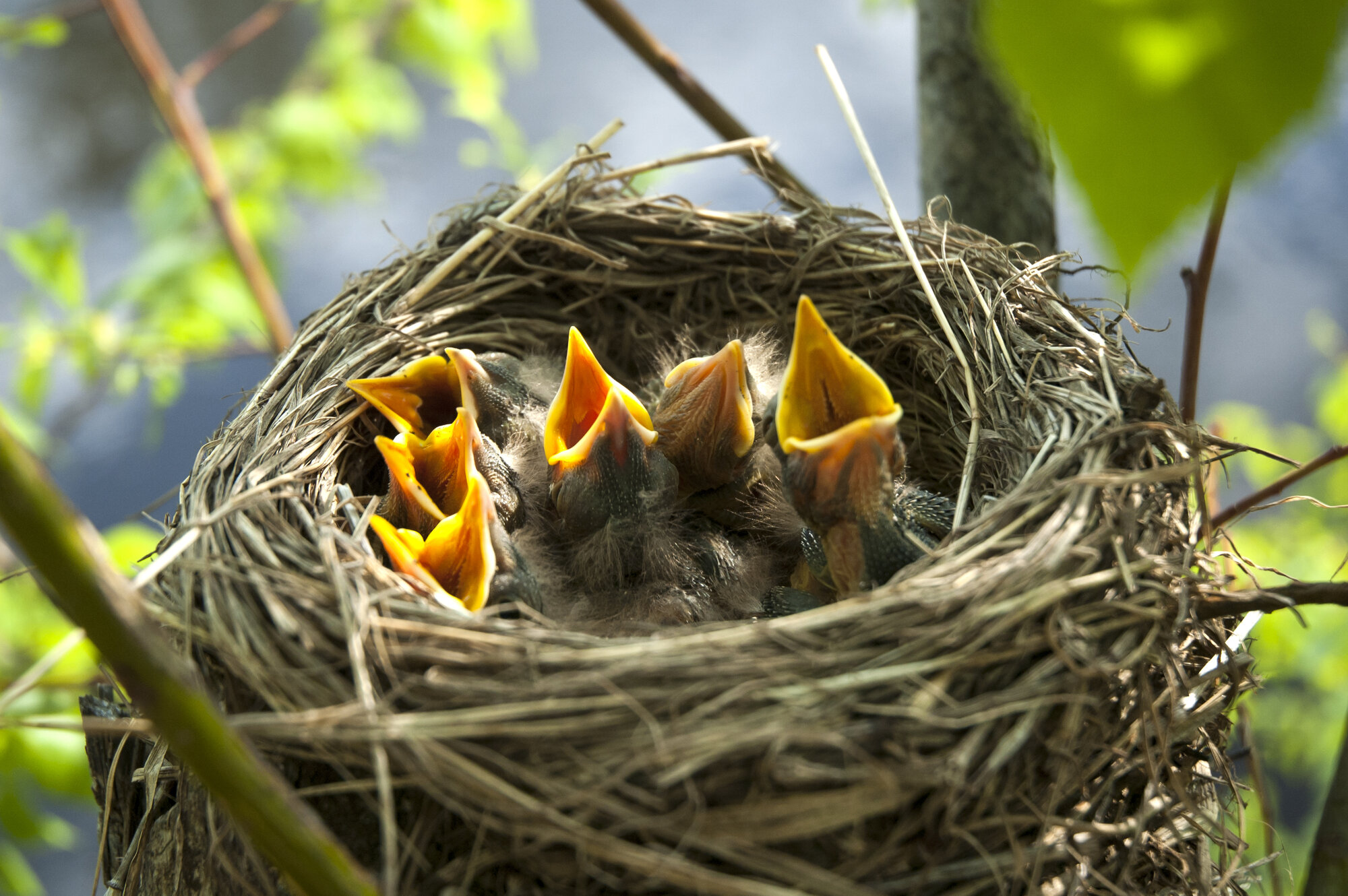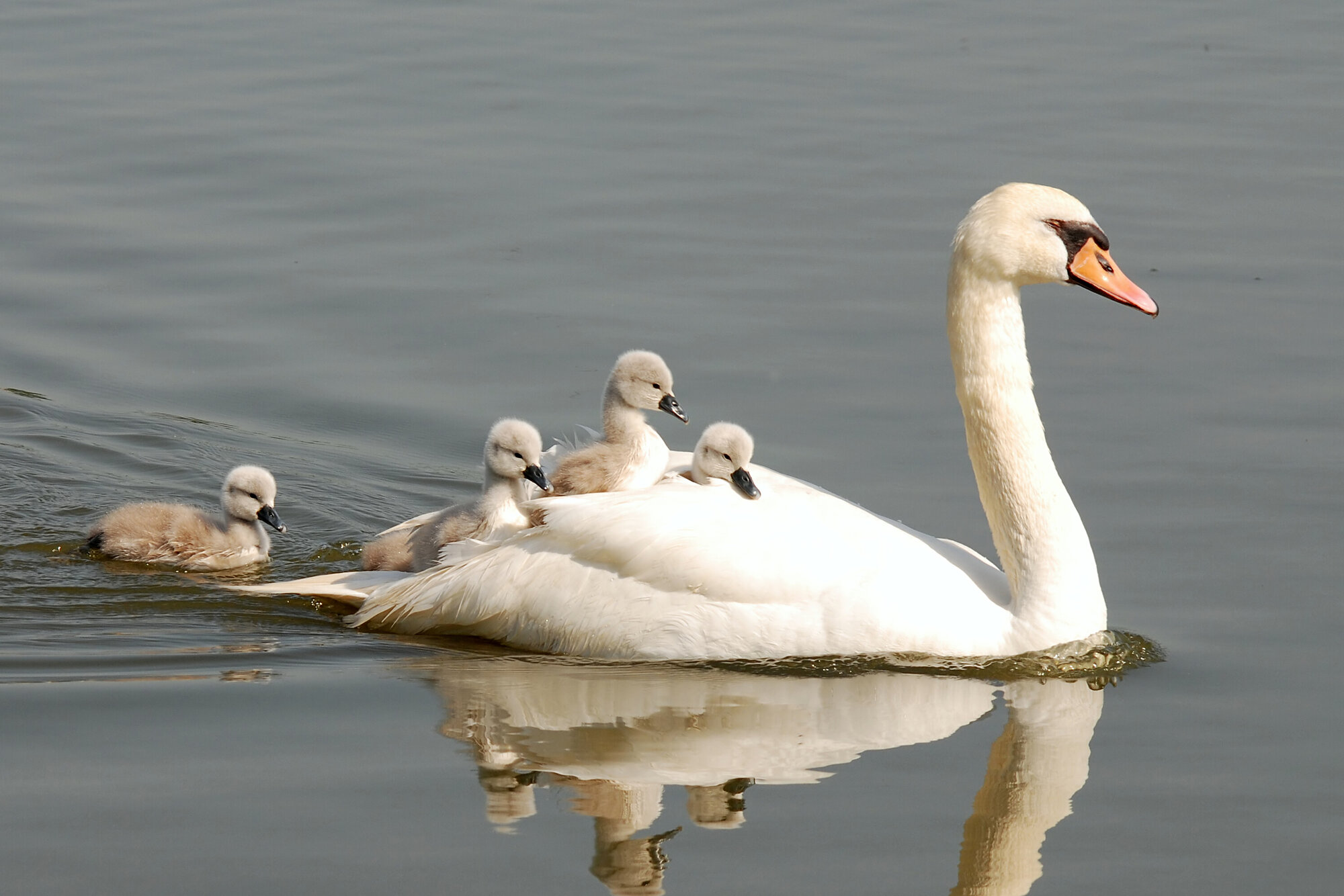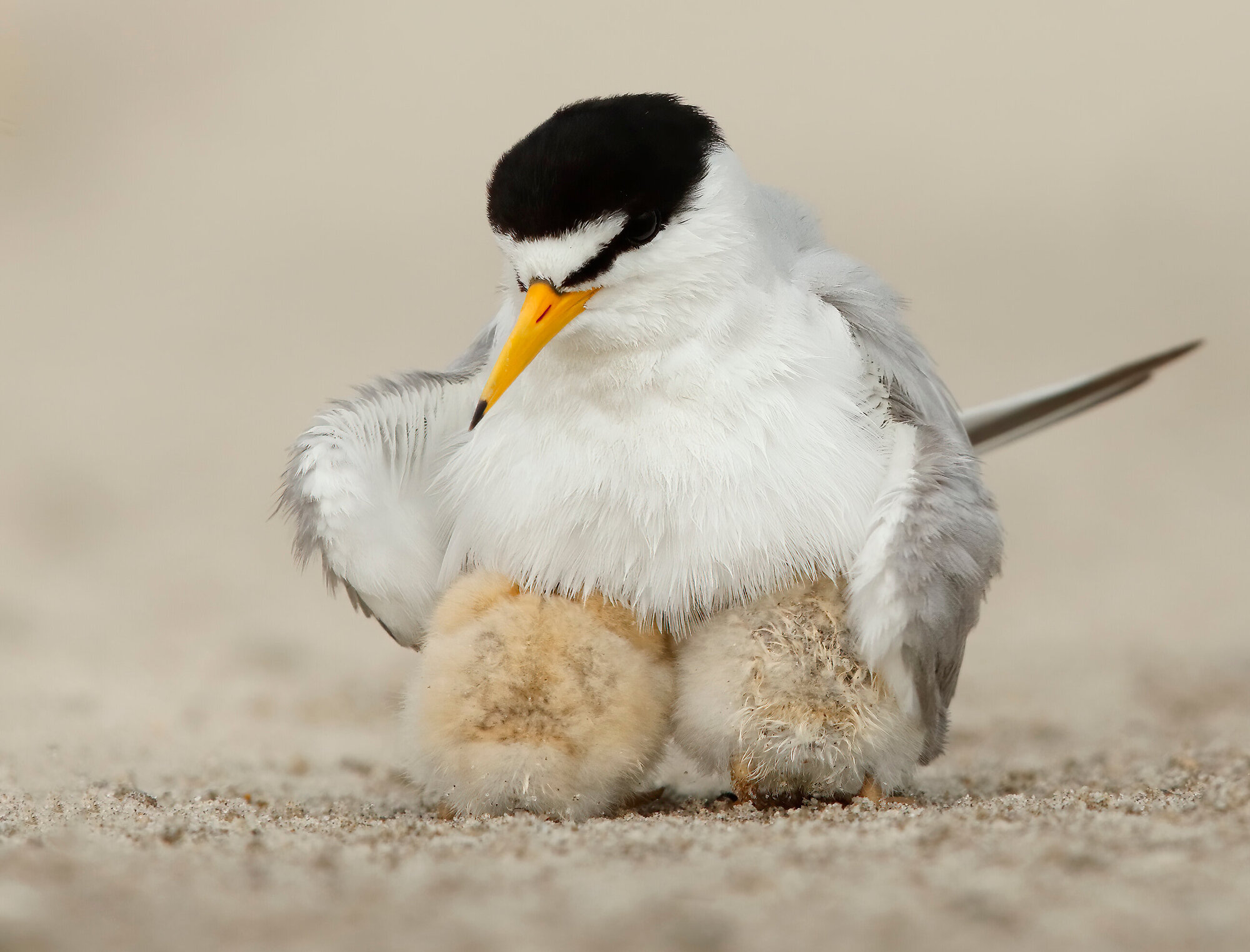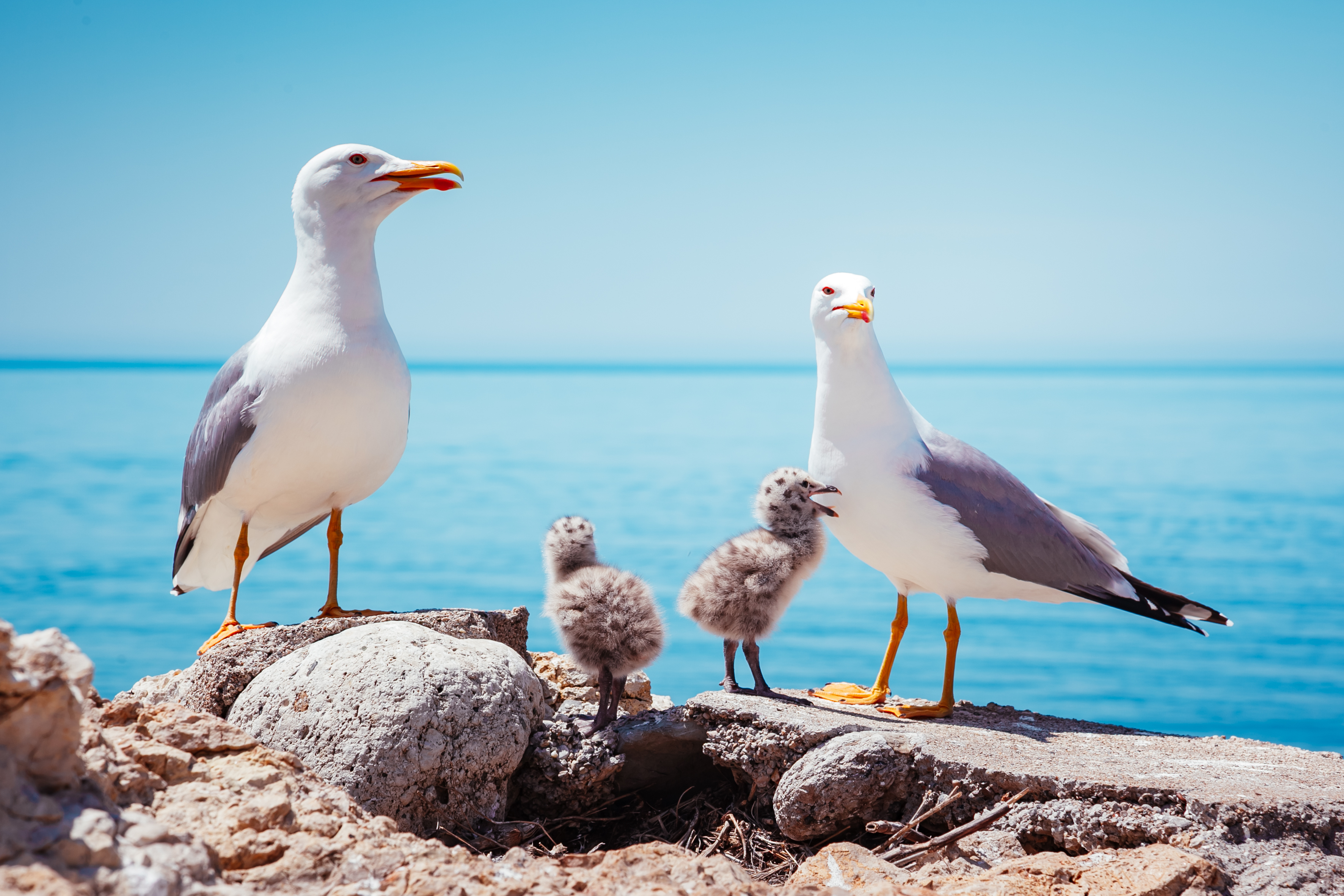Hatchlings, nestlings and fledglings.
Today, almost 11,000 different bird species are known worldwide. The needs and behaviours of the individual species differ greatly from each other, because they live in different habitats and conditions. This is especially true with regard to brood care and the behaviour of the young birds after hatching. However, over time, common basic trends in the care of young birds and in their behaviour, which have proven to be advantageous and safe in order to optimally protect the young birds from predators, have developed across species.
The young birds of all bird species can be roughly divided into 3 groups: altricial birds, precocial birds and brood parasites

Altricial birds
Altricials are birds of whom the hatchlings are very strongly dependent on the nest or the place where they hatched and remain sitting in/perched on it. Almost all altricial hatchlings are naked, blind and deaf when they hatch, meaning that they are completely dependent on their parents for survival. The parent birds have to warm and feed the fragile, helpless young chicks almost round the clock. In the first phase of their life, altricial hatchlings cannot survive outside the nest.
Once their eyes and ears are fully developed and their plumage fully formed, the youngsters leave the nest and learn to feed and fly on their own. At this point, however, they still have to be supplied with food by their parents. In this phase, the young animals are particularly at risk, as they also attract predators with their calls for their parents and remain in the same place instead of fleeing when the are in danger.
Altricial birds include storks, pigeons, birds of prey, swifts, woodpeckers and all species of songbirds.

Precocial birds
Precocial birds are the complete opposite of altricial birds. The young animals usually leave the nest under the supervision of the parents immediately or only 1 or 2 days after hatching; they literally flee from it and usually never return there. This is only possible because precocial birds are already fully feathered after hatching and can already see and hear. This allows them to keep themselves warm to a certain extent. In addition, they can walk immediately, and waterfowl can also swim. In the first few days, precocial animals receive additional warmth from their parents, but most importantly, they are protected from predators.l Most precocials can feed themselves immediately because their knowledge of suitable food is largely innate. The plumage of the young birds usually differs greatly from that of the parents.
The precocial group includes swans, ducks, geese and cranes.

Fledglings
Fledglings are similar to precocials, but instead of being attached to the nest, they are attached to the environment around it or the place where they were born. Fledglings move a maximum of a few meters from this place and thus stay in and around the nest. Although they are already covered with down feathers when they hatch and can hear and see (some even walk immediately), they are still dependent on their parents during the growth phase and have to be fed and kept warm (so-called brooding) regularly. At the beginning, fledglings cannot fly and they only become really independent as soon as they have learned to fly.
The young of gulls and terns, for example, belong to the group of fledglings.
It doesn't matter whether they are hatchlings, nestlings or fledglings, the parents feed, warm and protect them until the young are fully fledged. This is why they are especially easily scared at this time.

